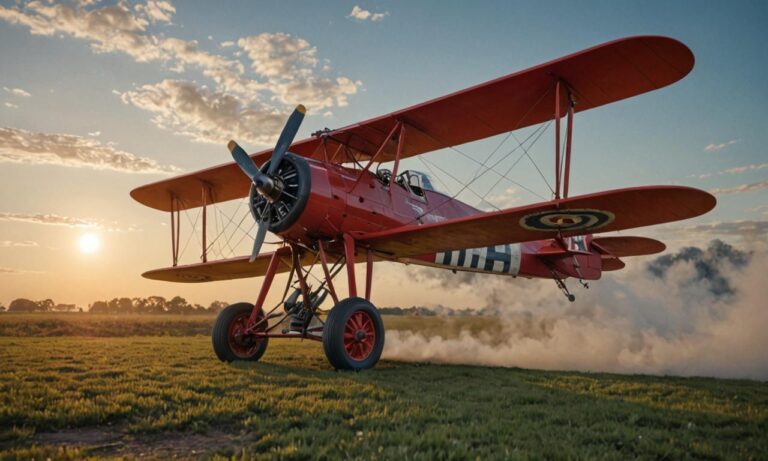Discovering the aircraft flown by the legendary Red Baron, also known as Manfred von Richthofen, is akin to unraveling a fascinating chapter in aviation history. Renowned for his unmatched aerial prowess during World War I, the Red Baron’s choice of aircraft played a pivotal role in his legacy.
The Red Baron: A Brief Overview
Manfred von Richthofen, born on May 2, 1892, in Kleinburg, Prussia, rose to prominence as one of the most skilled fighter pilots of the war. With 80 confirmed aerial victories, he became an iconic figure in military aviation.
The Iconic Aircraft
Among the myriad of planes utilized during World War I, the Red Baron’s aircraft of choice was the Albatros D.III. This German biplane, introduced in late 1916, was renowned for its agility and speed, making it a formidable opponent in aerial combat.
The Albatros D.III: Specifications
The Albatros D.III featured a powerful inline engine, typically a Mercedes D.IIIa powerplant, capable of propelling the aircraft to a top speed of around 170 km/h (105 mph). With a wingspan of approximately 9 meters (29 feet), it possessed a relatively lightweight construction, enabling swift maneuvers crucial for dogfights.
Combat Performance
The Red Baron’s mastery of aerial combat, combined with the exceptional capabilities of the Albatros D.III, contributed significantly to his success on the battlefield. This formidable combination allowed him to outmaneuver and outgun adversaries with remarkable precision.
Legacy and Influence
The Red Baron’s unparalleled achievements in aerial combat, coupled with his distinctive crimson-colored Fokker Dr.I triplane, have cemented his place in history as one of the most celebrated fighter pilots of all time. Despite his tragic demise in April 1918, his legacy continues to inspire generations of aviators.
In summary, the Red Baron’s aircraft of choice, the Albatros D.III, epitomized the pinnacle of German engineering during World War I. Paired with his exceptional flying skills, it became an emblem of aerial superiority, solidifying his status as a legendary figure in aviation history.
Notable Aces of World War I
While the Red Baron remains one of the most famous fighter pilots of World War I, he was not the only ace to achieve significant success in aerial combat during this time period. Other notable aces from various nations include Eddie Rickenbacker of the United States, René Fonck of France, and Albert Ball of Britain.
Eddie Rickenbacker: American Ace
Eddie Rickenbacker, with 26 confirmed victories, became America’s top ace during World War I. Flying the SPAD XIII, he showcased remarkable skill and courage in combat, earning him the respect of his peers and adversaries alike.
René Fonck: French Ace
René Fonck, credited with 75 confirmed victories, was France’s leading ace of the war. Flying various aircraft such as the SPAD VII and SPAD XIII, Fonck demonstrated exceptional tactical prowess and became a national hero in France.
Albert Ball: British Ace
Albert Ball, with 44 confirmed victories, was one of Britain’s most renowned aces. Flying the Sopwith Camel, he displayed extraordinary bravery and skill in combat, although his career was tragically cut short when he was killed in action in 1917.
| Ace | Nationality | Confirmed Victories | Primary Aircraft |
|---|---|---|---|
| Eddie Rickenbacker | American | 26 | SPAD XIII |
| René Fonck | French | 75 | SPAD VII, SPAD XIII |
| Albert Ball | British | 44 | Sopwith Camel |
Frequently Asked Questions
- What was the top speed of the Albatros D.III?
- How many aerial victories did the Red Baron achieve?
- Who were some other notable fighter aces of World War I?
- What was the primary aircraft flown by Eddie Rickenbacker?
See also:






